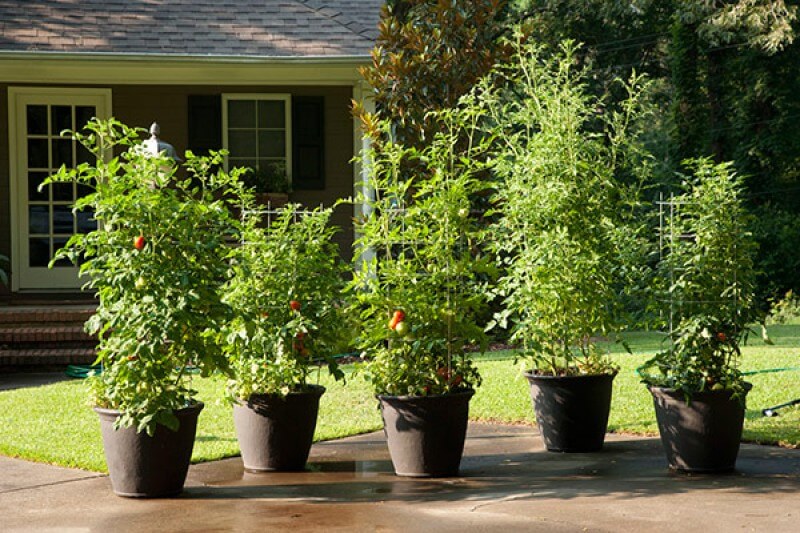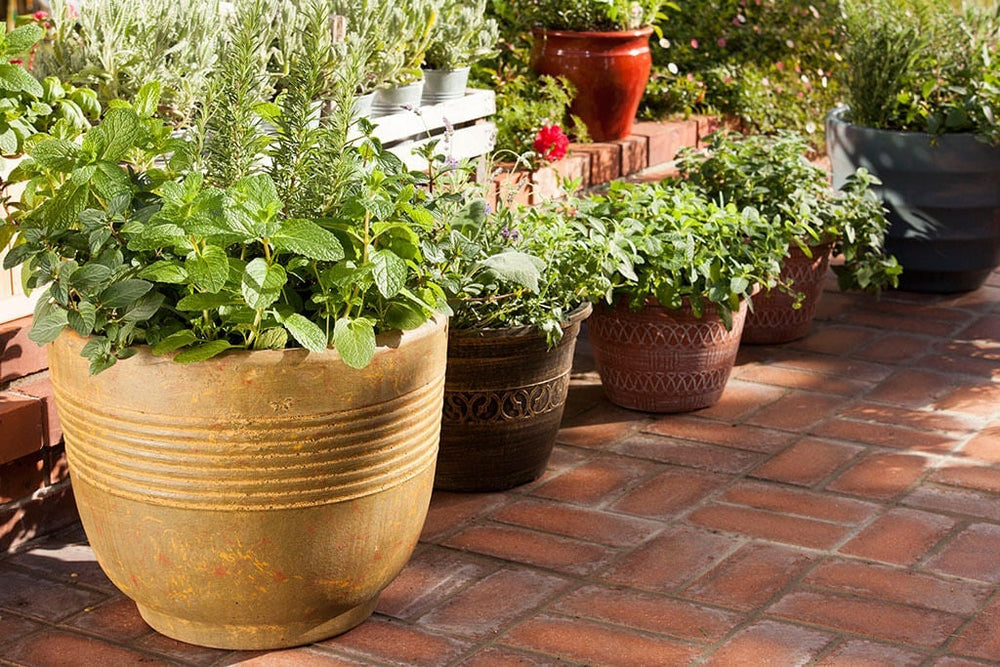Container gardening is easy and rewarding if you have the right containers. When choosing pots, you need to consider size, style, material, and weight, as well as what will be planted in them.
Choose the Right Container Size
Choosing a pot that is the right size for your plants will help ensure container gardening success. A pot that is too small means your plants will not produce as much, and you will need to work harder to keep them alive. If the pot is too large, you'll have to spend more money on potting soil than is necessary. Here's a guide to help you choose one that is just right.

A 24-inch diameter pot will hold one of the following
- large pepper
- summer squash
- indeterminate tomato and cage
- cucumber
- artichoke
- combinations of vegetables and herbs

An 18-inch diameter pot will hold one of these
- broccoli
- cauliflower
- large cabbage
- small eggplant
- all greens in multiples
- small pepper
- determinate tomato and support

A 14-inch diameter pot works for one of these
- any herbs
- cabbage
- collards
- spinach (3 to 4)
- non-heading lettuce (3 to 4)
- arugula (3)

A 10-inch diameter pot will hold one of these
- small herbs
- strawberry
- lettuce
Keep in mind that not all pots are round and tall. Shallow-rooted plants such as lettuce will be happy in a container that is wider than it is tall. However, most vegetables will need deeper pots. Broad plants such as a zucchini or pumpkin will benefit from a container that is both broad and deep. Half-barrels are perfect for bigger plants such as tomatoes and squash. Use your best judgment to give your plants plenty of room for optimum harvests, and know that sometimes experience provides the best advice for the future.
No matter what kind of pot you're using, be sure to fill it with premium potting mix, such as Miracle-Gro® Performance Organics® All Purpose Container Mix. Enriched with aged compost, it's just what your plants need for a strong start. For the best results throughout the season, though, starting with great soil isn't enough. You'll also want to feed your container plants regularly with a plant food like Miracle Gro® Performance Organics® All Purpose Plant Nutrition, since even the best soil will eventually run short of food for your garden if you don't replace it. This water-soluble organic fertilizer goes one step further, feeding the microbes in the soil that help make nutrients available to your plants, so your vegetables and herbs get all the food they need throughout the season.
Choose the Right Container Type
Terracotta
Attractive and affordable, terracotta clay pots have been used for generations. This traditional choice can be heavy and costly in large sizes, and they will break if dropped or exposed to freezing temperatures. Clay also dries out more quickly than some other materials, but it's still a favorite of many gardeners!
Glazed Ceramic
Durable ceramic containers offer a range of colors for added style in the garden. They are fairly winter-hardy, but can be costly and heavy to move.
Plastic
Plastic containers are affordable, durable, and lightweight. You may need to shop around the find a style that suits your design taste.
Wooden
Natural in appearance, wooden containers and half barrels make great containers. They will last several seasons. As they age, though, it becomes more difficult to move them.
Concrete
Of all the choices, concrete pots are the most durable — and the heaviest, so plan to place them in a permanent spot. Large sizes can be costly.





 Herbs
Herbs
 Vegetables
Vegetables
 Fruit
Fruit
 Flowers
Flowers
 Succulents
Succulents


